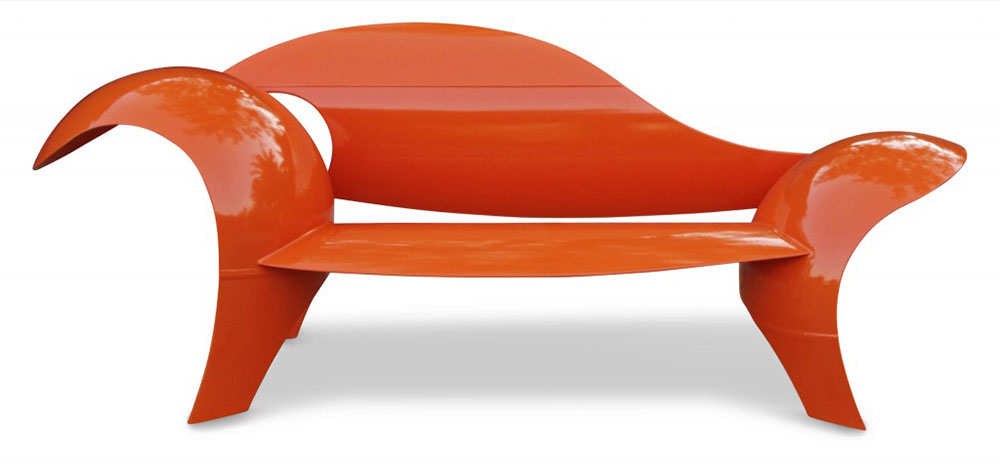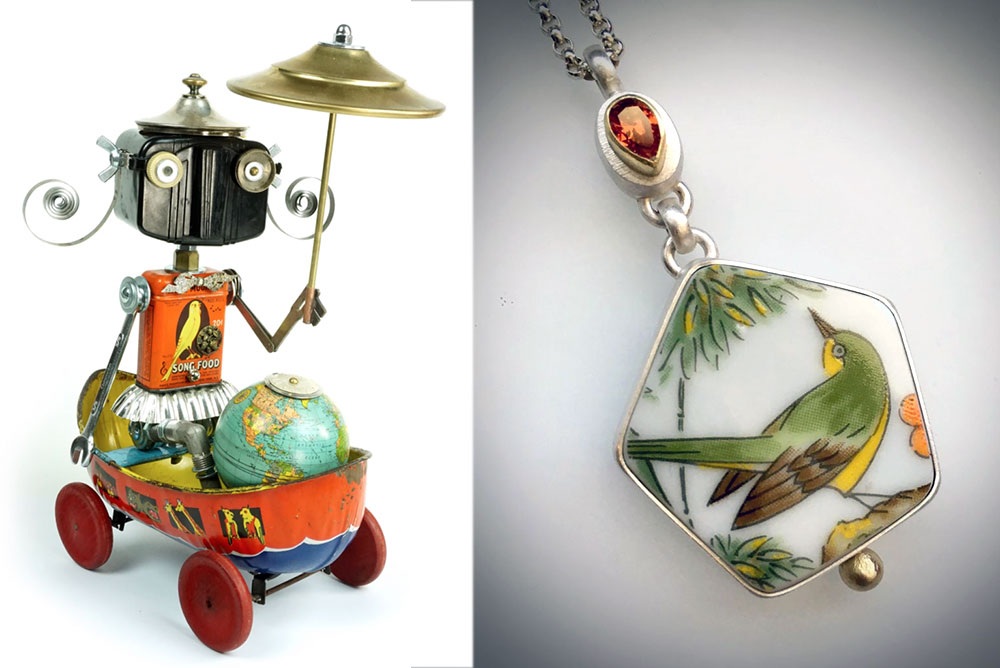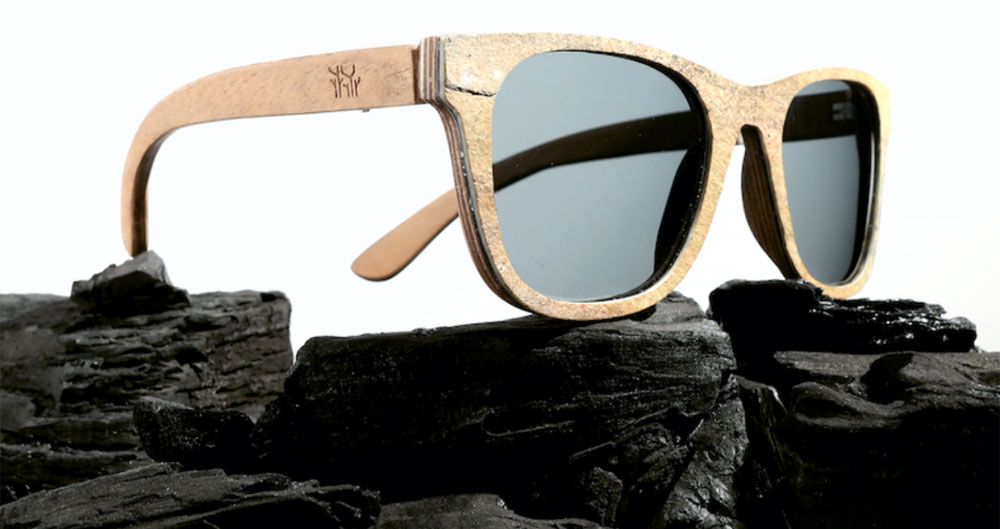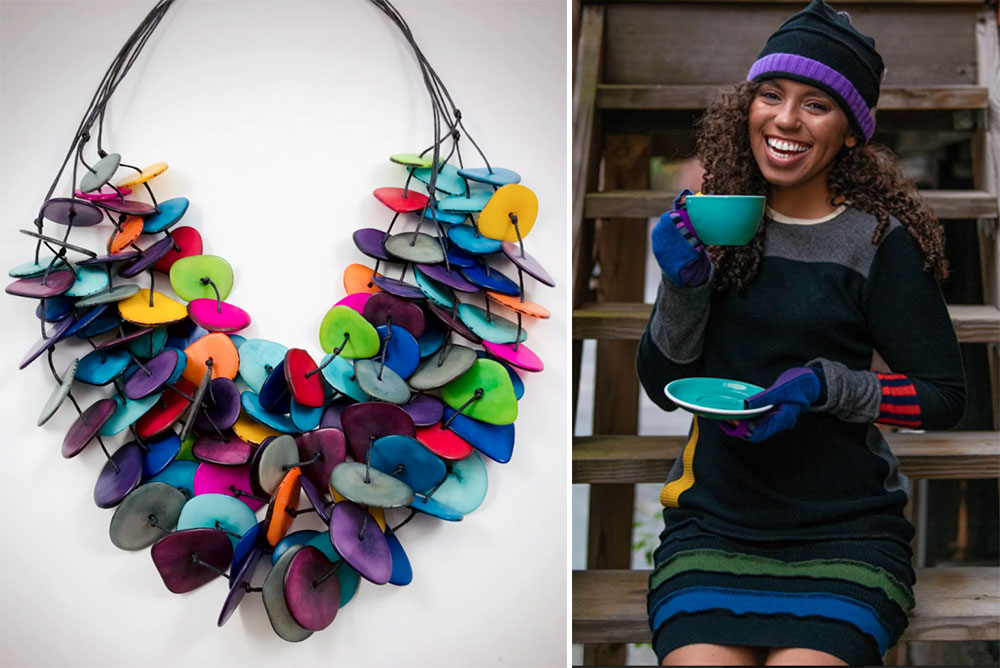
If more park benches looked like Colin Selig’s, how could we resist settling in and staying a while? Selig creates eco-friendly outdoor seating and biomorphic sculpture repurposed from scrap-steel propane tanks. Result: Minimal carbon footprint.
By Janet Kelly
LEAVE IT to the Smithsonian Women’s Committee to step up to a challenge. In 2020, during the height of the coronavirus pandemic, the committee sponsored its first virtual craft show. Now, this spring—April 24 through May 1, 2021—in partnership with Philadelphia-based nonprofit Honoring the Future, they’re set to launch Craft Optimism, the first Smithsonian Craft show to focus on climate change. The curated show and online marketplace will spotlight handcrafted American goods that educate the public about climate change.
To be eligible for inclusion in the show, each artist had to submit a sustainability statement, explaining how their work or their practice responded to the dangers of global warming by, for example, through energy or water conservation, tree preservation, waste reduction or use of recycled/repurposed material.
Contemporary craft experts, including museum curators, gallery owners and craft school educators, nominated artists and makers based on the quality of their work and their commitment to combat climate change.
“Craft Optimism celebrates the power and creativity of a diverse group of craft artists who call attention to an Earth in crisis and offer inventive ideas for curtailing human impacts on the environment,” said Fran Dubrowski, director of Honoring the Future.
The selected artists’ pieces encompass jewelry, clothing, accessories and art and decor in a variety of styles and price points. The show opens Saturday, April 24 at 9am and continues through May 1 at 11:59pm. Registration will be available soon at Bidsquare, a platform that the Smithsonian partnered with for the fall 2020 Virtual Smithsonian Craft Show and will do so again for this spring’s show. Although Bidsquare is primarily used for bidding on items in auctions, there is no auction element involved. The site, which will go live on April 23 with pricing, has a “Buy Now” function that consumers will use to purchase items from the show.
For a sneak preview of what’s to come, see a few of our favorite pieces below.

LEFT: Fobots (Found Object Robots) are the creations of Raleigh, North Carolina artist Amy Flynn. She combs flea markets, auctions, antique malls and the internet for vintage items, such as tin containers and common household goods. Flynn then solders and bolts her finds together to create these pieces of sculptural art.
RIGHT: Trained as a metalsmith and inspired by nature, jeweler Amy Faust cuts reclaimed vintage glass bottles and jars, special beach pebbles and broken porcelain into defined shapes, replacing the traditional use of gemstones. In the porcelain, she looks for imagery of farmland and birds, both fragile parts of the environment. For her jewelry settings, she uses recycled sterling and fine silver.

ABOVE: Inspired by fashions from the past, Ana A’s eyeglasses and purses from sustainable sources come with a modern flair. The woods she uses to make eyeglasses are sourced from sustainable operations in Colombia, certified by the Forest Stewardship Council and Fedemaderas (Colombia’s tree federation). Wood removed from discarded bark is repurposed and recycled to create her innovative pieces. She uses Piñatex, a cruelty-free alternative to leather made from the discarded leaves of the pineapple plant, to make her handbags.

LEFT: Not for the color-shy! Lula Castillo’s eco-friendly accessories are made with sustainable materials such as nuts, rare beans and seeds collected in the Amazon rainforest. She has developed a technique to work with recycled pieces of citrus peel which she then combines with the seeds to create wearable pieces of art.
RIGHT: Kathleen Tesnakis, founder of Ekologic, transforms cashmere discards from the New York City garment district into colorful, warm sweaters and accessories with zero waste. Since her company began, Tesnakis has rescued and reworked more than 16 tons of discarded cashmere items.
The Smithsonian Women’s Committee (SWC) is dedicated to advancing the Smithsonian’s mission to increase and diffuse knowledge. Founded in 1966, SWC celebrates fine American craft through the Smithsonian Craft Show. The committee awards grants and endowments throughout the Smithsonian from the funds raised at the shows.
Honoring the Future harnesses the power of art to educate, empower and engage the public on climate change. The nonprofit organization’s art exhibitions and programs spark conversation and inspire action to create a climate smart world. Since 2015, it has sponsored an annual Sustainability Award at the Smithsonian Craft Show to recognize artists whose work “educates the public about climate change or inspires or models a sustainable response to climate change.”
